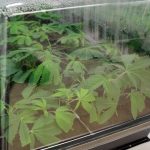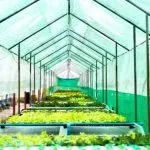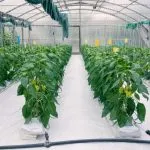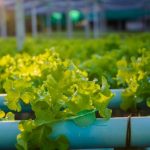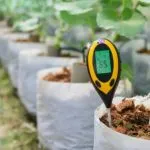Struggling to combat high humidity in your grow tent or grow room? We’ve got you covered! In this article, we’ll reveal effective strategies on how to lower humidity in a grow tent or grow room, ensuring optimal conditions for your plants’ growth. Excessive humidity can lead to issues like mold, pests, and hindered plant development. But fear not, as we’re here to provide you with practical solutions to overcome this challenge. Get ready to regain control and create the perfect environment for your plants to thrive.
Ventilation is a key factor in humidity control. Proper airflow helps regulate moisture levels and prevent stagnant, humid air from causing problems. We’ll discuss the importance of ventilation and guide you through various techniques, including exhaust fans, intake fans, and air circulation setups. Discover how strategic placement and airflow management can significantly reduce humidity, promoting healthier plant growth.
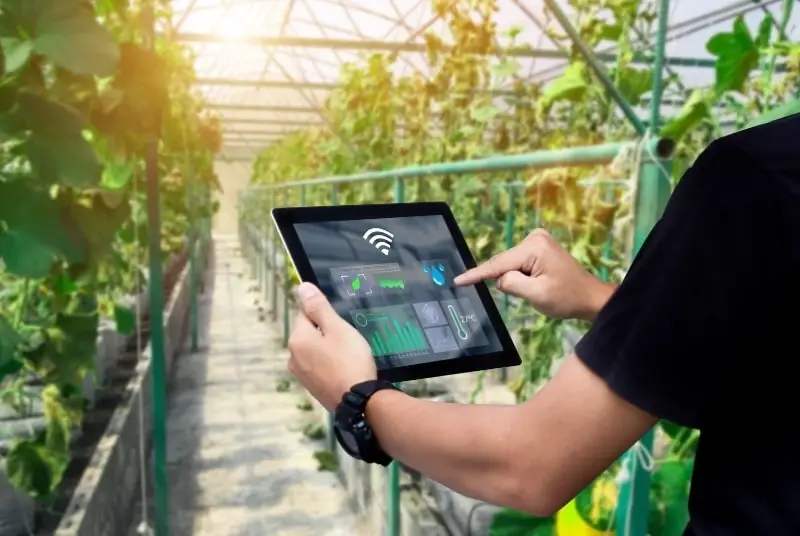
Moisture-absorbing methods also play a crucial role in lowering humidity. We’ll explore options such as dehumidifiers, silica gel packs, and natural remedies like charcoal or salt. These techniques help remove excess moisture from the air, creating a more favorable environment for your plants. Stay tuned to learn more about these effective methods and additional tips for achieving the ideal humidity balance in your grow tent or grow room. Your plants will thank you!
Understanding Humidity And Its Impact On Grow Rooms
Humidity plays a significant role in your grow room or grow tent, and finding the right balance is essential for healthy plants. Both too little and too much humidity can cause various issues for your hydroponic plants.
When there’s too little humidity in your grow tent, it can lead to drought stress which manifests in stunted growth, yellowing leaves, and premature flowering. On the other hand, too much humidity can create the perfect environment for mold and mildew growth, bud and root rot, and disease and pest problems, all of which can ruin your crop. Mold and mildew are two of the biggest threats to any grow operation.
It’s important to maintain appropriate humidity levels depending on the life cycle of your plants. Learn about the requirements for each stage in the cycle and how to control humidity in a greenhouse or grow tent.
Now that you understand the importance of humidity in your grow room, let’s discuss some ways to decrease humidity in a grow tent if needed. One effective method is to use a dehumidifier or air conditioner, which can help maintain ideal conditions for your plants. You can also remove stagnant water and decrease plant density to improve airflow and reduce humidity further. There are numerous other methods and strategies for managing humidity, but the key takeaway is identifying the ideal levels for your grow room and adopting the best approaches to maintain them.
Ways To Lower Humidity In A Grow Room Or Grow Tent
Using Dehumidifiers
One of the best ways to lower humidity in your grow tent is by using a grow tent dehumidifier. These devices work by removing excess moisture from the air, helping to maintain a balanced humidity level. While dehumidifiers can be expensive, investing in one can help you avoid plant issues stemming from high humidity.
Where To Place Dehumidifier In a Grow Room
The positioning of your dehumidifier is essential for its effectiveness. Here are some tips to guide you:
- Near the Intake Fan: The intake fan pulls air into your grow room, so by placing the dehumidifier near this fan, it can immediately start working on incoming humid air.
- Away from Plants and Lights: Dehumidifiers should not be placed too close to plants or lights as they could potentially cause heat damage or dry out your plants excessively.
- Space Availability: Consider where you have enough space in the room as dehumidifiers can be bulky.
- Easy Access for Maintenance: Position it in a place easily accessible for regular maintenance like cleaning and emptying the water reservoir.
- Raised Position: If possible, place the dehumidifier at a higher position to allow good airflow and distribution of the dried air throughout your grow tent.
Remember that depending on your specific growing conditions, you may need to adjust these guidelines slightly.
How To Lower Humidity In a Grow Tent Without Dehumidifier
For a cheap way to lower humidity in grow tent, consider the following practical approaches:
- Remove stagnant water: Make sure to eliminate any standing water in your grow room, as this can contribute to high humidity levels.
- Use fans to improve air circulation: Strategically place fans in your grow room to promote air movement, reducing moisture build-up.
- Use moisture-absorbing materials: A simple trick is adding moisture-absorbent materials, like desiccants, to your grow setup.
Ventilation And Air Circulation
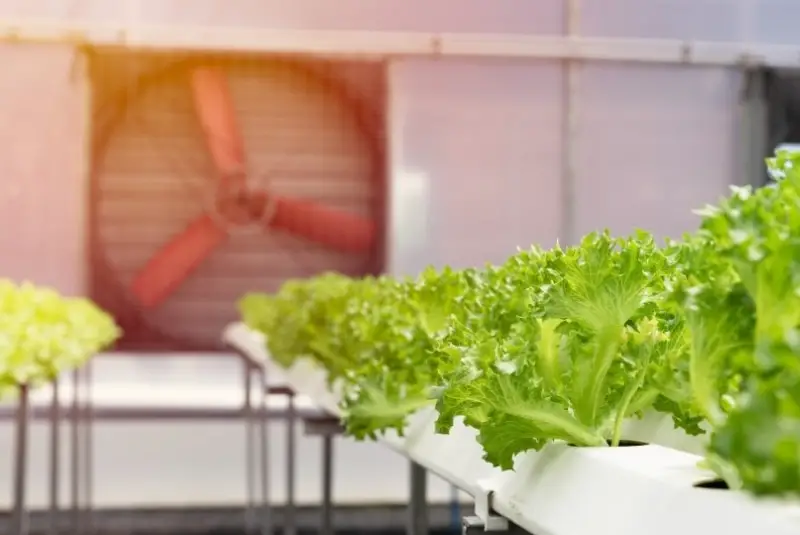
Proper ventilation is imperative in maintaining a suitable humidity level. Installing an exhaust fan can help to remove excess humidity by expelling moist air, while an intake fan can bring in drier air from the outside. Ensuring that the air in the grow room is well-circulated and exchanged consistently will help prevent humidity issues.
Temperature Control
Temperature and humidity are closely related. By maintaining a consistent temperature in your grow space, you can help regulate humidity levels. Air conditioners can be a useful tool for temperature and humidity control, as they cool the grow tent or grow room and dehumidify simultaneously.
Moisture Absorbers
Using a moisture absorber in your grow tent can be an effective method of controlling humidity. Some common moisture-absorbing materials include:
- Silica gel packets
- Calcium chloride
- Charcoal briquettes
Placing these materials around your grow space will help to absorb excess moisture and maintain optimal humidity levels.
Proper Plant Spacing
Avoid overcrowding your grow room or tent. Proper plant spacing allows for better air circulation and decreases the humidity levels. Overcrowding can lead to a buildup of humidity, as plants release moisture through transpiration. Ensure there’s ample space between each plant to promote a healthy growing environment.
Related: If you have the opposite problem of a very dry environment, then learn how to boost humidity in grow tent.
How To Lower Humidity In Grow Tent When Lights Are Off at Night
When the lights are off in your grow tent, the humidity levels can sometimes rise. To prevent potential issues such as mold growth and plant stress, it’s essential to lower the humidity effectively. Here are some practical steps to help you maintain the ideal humidity levels during the dark hours.
Firstly, consider using a small dehumidifier for your grow tent in combination with your existing ventilation system. By adding a dehumidifier, you can actively remove excess moisture from the air when the lights are off. This will help maintain ideal humidity levels without requiring constant monitoring. Remember to empty the water tray regularly and clean the dehumidifier as per the manufacturer’s guidelines.
Next, be sure to keep the air circulating within the grow tent. Even when the lights are off, it’s important to ensure adequate air movement. Fans can help to regulate humidity levels by preventing pockets of stagnant, humid air from forming. Place your oscillating fans in strategic locations within the grow space, directing airflow evenly across your plants.
Make sure to keep all water reservoirs and containers securely covered when not in use. Open water surfaces can release water vapor into the air, which in turn increases humidity levels. By covering your water containers and nutrient reservoirs, you limit the sources of additional moisture within the grow tent.
A heater can help to lower the humidity levels in the grow tent by increasing the temperature. This can help to evaporate the moisture in the air.
In addition to these measures, consider regularly monitoring the humidity levels using a hygrometer or a humidistat. A humidistat can be used to monitor the humidity levels in the grow tent and you can set it to turn on the dehumidifier when the humidity levels are too high.
Implementing these tips will help you maintain an optimal growing environment and avoid potential issues related to high humidity. With a combination of adequate airflow, proper water management, and the use of a small dehumidifier, you’ll be well on your way to successful indoor gardening.
Monitoring And Adjusting Humidity Levels
Using Hygrometers or Humidistats
When growing plants in a grow tent, keeping an eye on humidity levels is essential. To monitor your grow tent’s humidity, invest in a high-quality hygrometer or humidistat. This device measures the air’s humidity and temperature and helps you maintain the ideal conditions for your plants. To ensure accurate readings, place the humidistat at canopy level in the middle of the grow tent.
To address the issue of grow tent humidity being too high, consider purchasing a digital hygrometer with built-in alarms. These devices notify you when humidity levels exceed the desired range, allowing you to take necessary actions before any damage occurs to your plants.
Effective Automation Systems
Automation systems can help maintain optimal conditions inside a grow tent without constant manual intervention. Here are some components that help you control humidity levels more efficiently:
- Dehumidifiers: Installing a dehumidifier in your grow tent is an effective solution to high humidity. These devices remove excess moisture from the air, maintaining the desired range of 40-60% relative humidity (RH) for most indoor grow operations. Choose a dehumidifier that suits your tent size and offers features like automatic shut-off and adjustable humidity settings.
- Air Conditioners or heaters: Grow tents can benefit from air conditioners, especially in warmer climates. Heaters are great for cooler climates. Both remove heat and humidity from the air, helping maintain optimal growing conditions. To reduce humidity further, ensure proper drainage for your air conditioner’s condensate.
- Ventilation System: Proper ventilation is vital for controlling humidity in your grow tent. Ensure you have adequate exhaust fans and intake vents, allowing fresh air to circulate while removing stale, humid air. Periodically inspect and clean your fans and filters to ensure maximum efficiency.
- Controllers: If you’re looking to streamline your humidity control efforts, consider investing in a dedicated humidity controller. These devices are designed to work with your dehumidifier, air conditioner, or ventilation system, automatically adjusting settings based on your target humidity levels.
By monitoring humidity levels with hygrometers or humidistats and using effective automation systems, you’ll be well-equipped to manage grow tent humidity too high and create an optimal environment for your plants. Remember to check your devices regularly and adjust settings as needed to maintain ideal growing conditions.
Additional Tips And Precautions
Avoid Overwatering Plants
One common mistake you might make is overwatering your plants. Overwatering increases humidity levels in the grow room or grow tent. To avoid this, make sure to water your plants according to their specific needs and the stage of their growth. Use proper guidelines for watering your hydroponic system. We have a guide for a proper watering schedule for NFT and one with a watering schedule for ebb and flow. If you’re using DWC, we have a guide on appropriate water levels for DWC too. This simple strategy can prevent you from drowning your plants and causing excess humidity.
Cleanliness And Maintenance
Keeping your grow room or grow tent clean and well-maintained is essential for controlling humidity levels. Here are some tips for maintaining cleanliness and a healthy environment for your plants:
- Regularly inspect trays and containers to ensure there is no standing water, as this can significantly increase humidity levels. Empty them out immediately if you find any water.
- Clean up any spilled water and organic matter right away, as these can contribute to high humidity and might attract pests or mold.
- Change the water in hydroponic systems regularly to avoid microbial growth that can raise humidity.
- Regularly clean and replace air filters in your ventilation system to ensure proper airflow.

